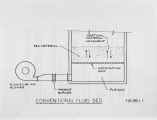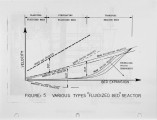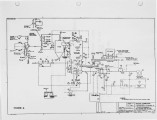| OCR Text |
Show Pag~ 2 . Introduction to Fluid Bed Combustion (FBC) The concept of fluid bed combustion is not particularly new. Serious investigation began during World War II and has continued with notable work done in conjunction with developing more effective use of u.s. coal reserves. The advanta~es inherent - in the -concept .are the ability to retain solid materials within the combustion zone while maximizing the surfaces available for gasification and combustion. Because of this basic action, efficient operation is possible at relatively low temperatures 1200 deg F to 1800 deg F, utilization of low grade fuels and mixtures of fuels is possible, and by proper selection of bed materials, certain emission problems can be controlled. (S02 emissions from sulfur bearing fuels have been successfully controlled via limestone within the bed material.) As with any technology, FBC has its limitations. Inherent in the design of conventional fluid beds, Figure 1, are the problems of distribution or nozzle grid blockage, need for excessive fuel or waste pretreatment (size restriction), and very limited turndown capability. Background to Spouted Fluidized Bed Combustion (SFBC) SFB technology was originally conceived for drying applications thirty years ago in Canada. In the mid 70's, work was done on SFBC in Australia. Research and development on SFBC has been undertaken in the USA by Battelle Columbus Laboratories for the U.S. Department of Energy in recent years. Every year, U.S. government regulations are becoming more stringent. The Resource Conservation and Recovery Act (RCRA) and recent amendments has put a tight control on disposal of hazardous wastes. Landfills are scarce and expensive to use. Transportation of wastes is costly and sometimes dangerous. Of all the options, on site incineration or thermal oxidation seems to offer the best solution. Commercial development of a range of advanced SFBC's for the thermal disposal of industrial wastes was prompted by the urgent need for a device to effectively and safely destruct a broad range of organic wastes, hazardous and nonhazardous, liquid, sludge and solid, helping to solve the problem of waste disposal. |




















